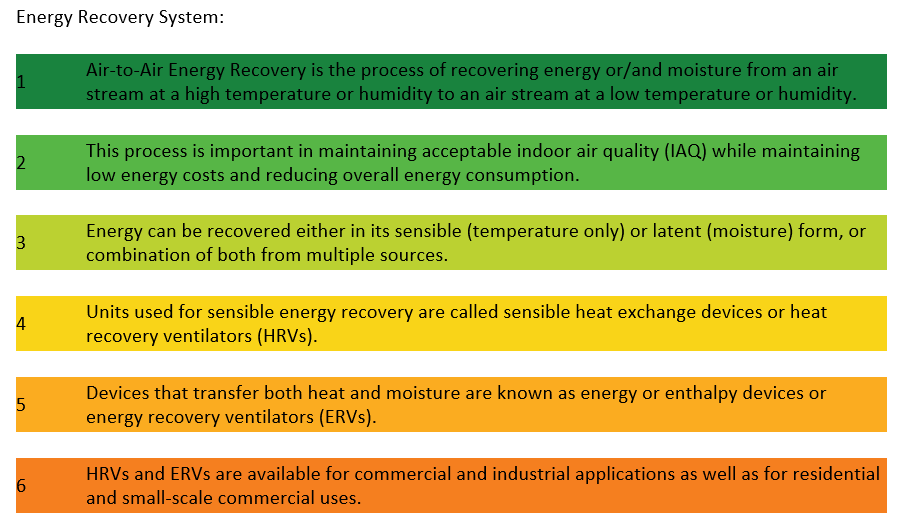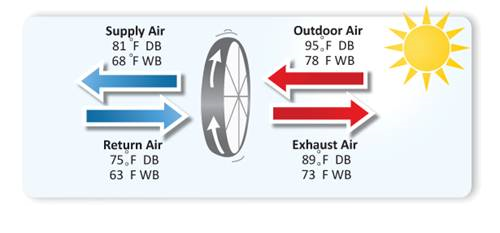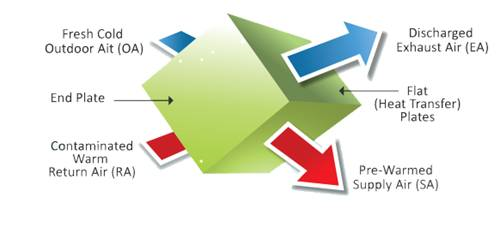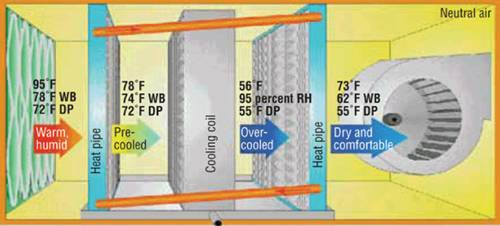Energy efficiency requirements are becoming more rigorous with the growing concerns for environmental and economic sustainability. Around 70% of energy usage and 63 % of greenhouse gas emissions are estimated to be contributable to heating, cooling and ventilation. HVAC typically accounts for 40-50 % of the total energy bill for businesses and commercial buildings.
E&B provide a wide range of solutions that incorporate the latest technologies that facilitate energy saving requirements and enhance indoor air quality and occupant comfort requirements.
Highly-Insulated Air Handling Units thermal resistance increased by using high resistive insulation material, closed-cell foam insulation, with a lower thermal conductivity and 2” – standard thickness, 4” optional
Thermal Break Panels for the AHUs, this option increases the thermal resistivity. There is no contact between inner and outer surfaces, reducing the thermal conduction.
Variable air system utilizing communication controller on VAV terminals enables digital communication between the unit controller and the central building automation system. The result is a system that can be monitored from a central point, offers control flexibility, and enables system-optimized control strategies. Buildings can be controlled more intelligently because the data (airflow, damper position, fan, and heat status) is available to perform complex system-control strategies and diagnostics from a central monitoring station.
Energy saving is accomplished through air volume reduction and reduced fan energy consumption at part load conditions.VAV systems provide multi zone independently controlled spaces (independent thermostats) that accommodate varying levels of comfort. Exceptional SEER has been demonstrated through VAV rooftop package with air side economizer installed on numerous projects worldwide.

A. Energy recovery wheels:
This device proposes a rotating surface composed of small aluminum cells, which transfer sensible energy (hot or cold air). When desiccant is added to the aluminum cells, the heat wheel transfers both sensible and latent energy (moisture) from one air stream to the other.

Petra energy wheels normally recover 70-75% both sensible and latent energy
B. Cross flow heat exchanger:
This type of heat recovery relies on the thermal conduction for energy recovery. It consists of alternate aluminum layers of plates separated and sealed and this type is limited to sensible energy recovery. When the plate exchanger is composed of layers of polymeric membrane sheets, the plates allow also moisture to be transferred from one air stream to the other.

C. Heat pipe coils:
This type of energy recovery utilizes two coils filled with refrigerant. The energy transferred from supply/exhaust air by changing the phases (liquid/vapor) of the refrigerant inside the tube without pumping force.

This entire process of pre-cool and reheat is accomplished with no additional energy use. The result is an air conditioning system with the ability to remove 50 to 100% more moisture than regular systems.

